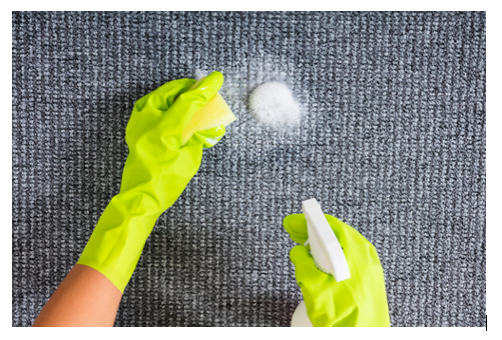
Properly Utilizing a Commercial Carpet Shampooer for Effective Cleaning
If you want to run a successful carpet cleaning business, it will take more than just having a full set of commercial-grade equipment. You may have top-of-the-line gear like a commercial carpet shampooer, but if your employees don’t operate them properly, the results of their efforts would be less than satisfactory. Even worse, you risk damaging the equipment from inappropriate usage.
Expert carpet care requires precision in order to preserve the carpet’s appearance and prolong its lifespan. Before starting a job, make sure that a proper commercial carpet cleaning plan is in place.
Reduce Dirt Being Tracked Inside
Prevention might just be the most important aspect of keeping the premises clean. It only makes sense to limit the amount of dirt and debris that are being tracked inside by people, especially for the areas that get the most foot traffic. One way to do this is by strategically placing mats in the entrance areas and other key locations in the building. This significantly reduces the amount of dirt that would need to be cleaned.
This would need to be followed up by regular vacuuming. A daily vacuuming schedule is necessary to prevent dirt and soils from being matted against the carpet, which can damage the fibers in the long run. Make sure to use a commercial-grade vacuum for carpets that are in high-traffic areas. This will help make shampooing and deep cleaning much easier later on.
Identify Types of Fibers and Stains
The fact that carpets are made with different types of fibers and construction methods will certainly influence the cleaning method that should be used. Although carpet shampooers are designed to be versatile, you should still make the effort to look up a specific carpet’s specifications. In most cases, people don’t know who manufactured the carpet or the type of fibers it has. This, unfortunately, leads to bad cleaning practices, shrunken or damaged carpets and voided carpet warranties.
Carpet cleaning professionals should obtain the manufacturer’s specifications first. In the absence of those, experts may undergo special training to learn how to identify and evaluate different fibers through inspection. This will allow them to determine which cleaning methods are best or if a persistent stain will require a stronger cleaning chemical that won’t damage the carpet.
Speaking of stains, you also need to properly identify what kind of liquid has been spilled on the carpet before attempting to remove it. Using the wrong equipment or cleaning solution could turn one small spot of stain into a huge, unsightly smudge. Testing the chemicals on a less conspicuous spot on the carpet first before applying it is also a good practice. Try it out on areas that would mostly be covered, like a small patch that is meant to go directly under a table or a couch.
Schedule Routine Deep Cleaning
Deep cleaning is essential in carpet maintenance. It usually involves several steps, powerful equipment and a variety of cleaning agents. After applying specifically formulated shampoo and a thorough rinse, dirt on the surface will be cleared. The next step is hot water extraction or steam cleaning. Hot water and cleaning agents will be propelled into the carpet at high pressure to remove any deep-seated dirt or stains. The carpet will then be dried before being put to use again.
Even the most well-maintained carpets would eventually need deep cleaning. How frequently carpets should be deep cleaned, however, would depend on how much use it has seen and whether it was placed in a high-traffic area. Obviously, a carpet that was installed in the lobby would need to be scheduled for deep cleaning more often than one that was placed in a private office.
Observing proper cleaning methods and using appropriate equipment goes a long way in preserving carpets. Investing in these will help you establish a name for yourself in the cleaning industry.
